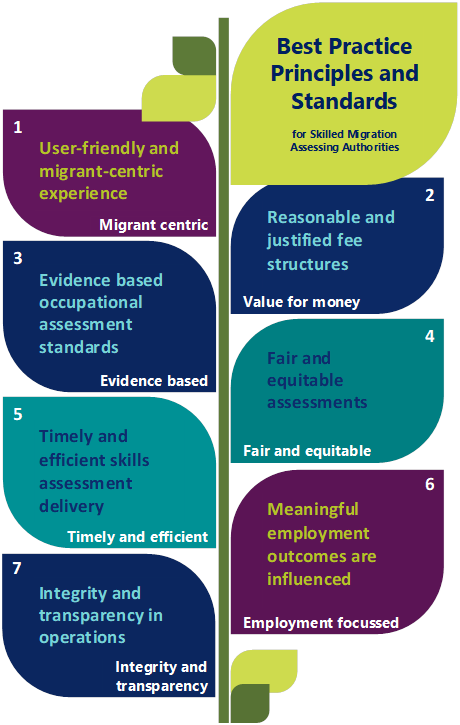On this page:

The department has a quality assurance role in ensuring that skills assessments are migrant-centric and delivered optimally in terms of process, standards, timeframes, industry requirements and cost. The department oversees Australia's skilled migration assessing authorities, promoting continual improvement and adherence to Best Practice Principles and Standards (BPPS). The department also:
- Assesses applications from entities seeking to become an assessing authority and makes recommendations to the Minister for Skills and Training for consideration.
- Monitors assessing authorities’ performance.
- Provides skills recognition policy advice to assessing authorities.
- Liaises with the Department of Home Affairs, Jobs and Skills Australia, and other Australian Government agencies.
- Ensures demonstration of Australia’s international obligations in skills recognition.
Best Practice Principles and Standards
The Best Practice Principles and Standards (BPPS) have been informed by consultations with assessing authorities, public submissions to a discussion paper (including submissions from peak bodies and unions), and the evaluation findings of pilot projects undertaken by the department. They are a central point of reference for both assessing authorities and case managers. The BPPS aim to raise the integrity, quality and timeliness of migration skills assessments and are embedded in the Guiding Principles and Standards for Skilled Migration Assessing Authorities (the Guide).
The Guiding Principles and Standards for Skilled Migration Assessing Authorities
The Guiding Principles and Standards for Skilled Migration Assessing Authorities (the Guide) provides guidance to assessing authorities for conducting skills assessments in line with the Best Practice Principles and Standards. The Guide also sets out how the government conducts assurance and sets the expectations for assessing authorities to continue to meet the conditions for which they have been approved to deliver skills assessments under the Migration Regulations 1994.
